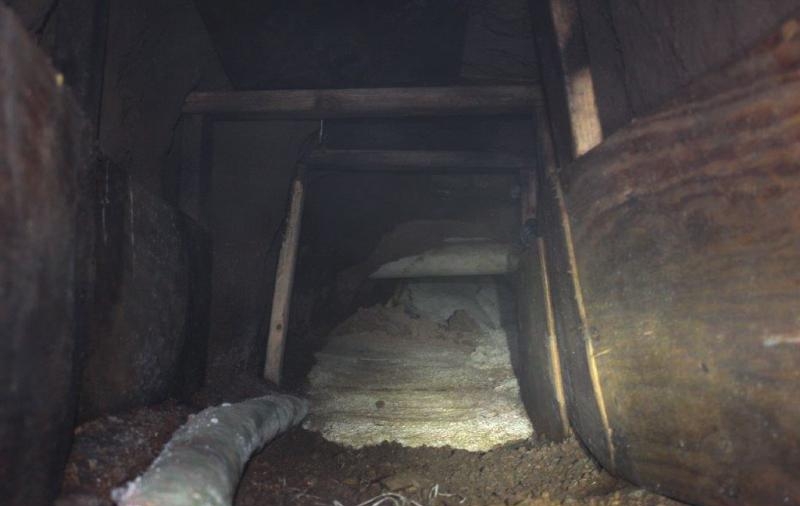A cross-border tunnel that started in Nogales, Mexico and ended in Nogales, Arizona was discovered by authorities.
Tuscon Sector Border Patrol agents found the incomplete and illegal tunnel during a routine bi-national sweep with Mexican law enforcement officers on Dec. 17, the U.S. Customs and Border Protection said.
The entry point was submerged underwater along an international waterway channel that was built below both cities of Nogales.
The tunnel was adjacent to the Port of Nogales and came to a stop beneath a parking lot in Nogales, Arizona.
“At approximately 50 feet in length, the tunnel extended 44 feet into the United States and was two feet wide by two feet tall. Within the tunnel, agents discovered structural shoring and digging tools, which indicate excavation was still in progress and incomplete,” the agency stated.
“Agents will continue to monitor and inspect the incomplete tunnel until it is properly secured and remediated with concrete filler.”
Border Patrol Agent Daniel Hernandez told the Arizona Republic that the agency has been working on taking a more proactive approach in recent years, working with officers in Mexico to conduct sweeps to explore underground areas to look for signs of tunnels before they’ve been completed.
The tunnel was the first discovered in the Nogales area in about two years; the area is where the most tunnels have been found along the U.S.-Mexico border.
Another cross-border tunnel, complete with a rail system, electricity, ventilation, and lighting, was discovered in Jacumba, California in October, several weeks after the opposite entrance was uncovered in Jacume, Mexico.
The tunnel stretched 627 feet, including 336 feet in the United States, but did not have an exit point into America.
“Agents reported that there was a solar panel system used to run the electrical, lighting and ventilation systems that were in the tunnel. There were also two sump-pump systems within the tunnel to pump out any water that gathered in the tunnel,” the Border Patrol said.
“Agents also reported that a rail system was installed that ran the entire length of the tunnel.”

Tunnels Under Border
The exact number of tunnels is unknown but some figures exist indicating there have been hundreds dug and found over the years.
Since the early 1990s, an average of two completed cross-border tunnels has been discovered by law enforcement officers every year, according to High Country News, with nearly 200 tunnels found in total, many incomplete.
Lance Lenoir, the head of the five-member Tunnel Rats team, described many of them as primitive and not sophisticated.
“I would not want to give our enemies that kind of credit,” he said. “The only thing that’s of note when it comes to these tunnels in San Diego is their persistence and audacity.”
The tunnels are used to smuggle illegal immigrants into the United States, in addition to drugs.
According to the San Diego Union-Tribune, the first large-scale cross-border tunnel was discovered in Douglas, Arizona on May 17, 1990. The tunnel, which stretched about 300 feet to Agua Prieta, Sonora, into a house in Mexico where the entrance was hidden by a cover that was under a pool table.
The cover was opened by turning the water on at an outdoor spigot; a hydraulic pump system forced a section of the floor to rise about eight feet. the tunnel was equipped with a rail system for carts and lights.
Several other major tunnels were found in the 90s, the outlet said, but things really started ramping up in the 2000s, with the number of tunnels being discovered increasing dramatically.

